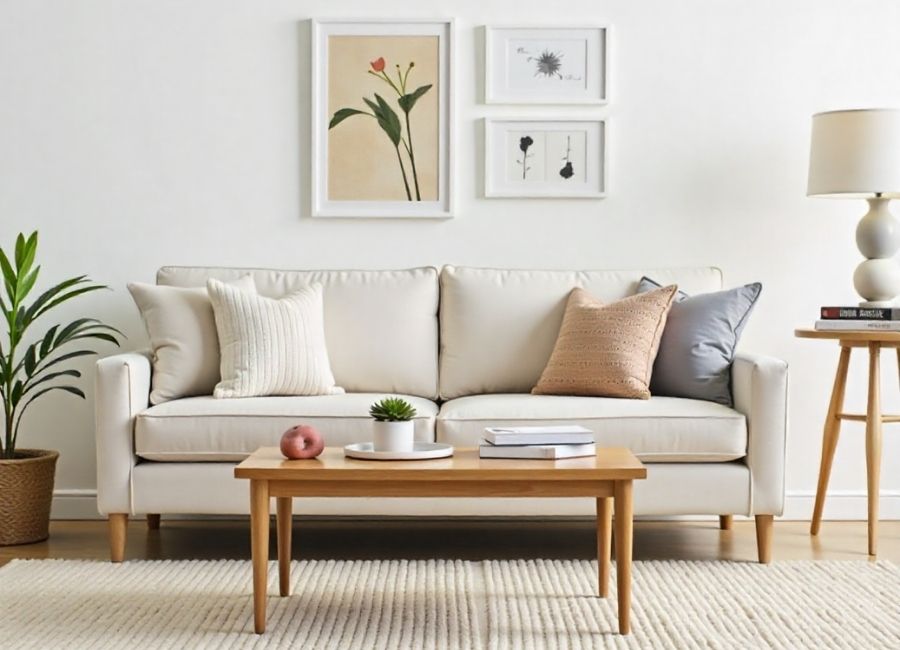Moving into a new space or redecorating your home? One crucial step can make or break your furniture shopping experience: accurate measurements. Nothing compares to the frustration of falling in love with the perfect sofa, only to discover it won’t fit through your doorway or overwhelm your living room.
Whether you’re shopping for a single accent piece or furnishing an entire home, knowing how to measure furniture correctly saves time, money, and countless headaches. This comprehensive guide walks you through everything you need to know about measuring furniture, from basic techniques to professional tips that interior designers swear by.
By the end of this article, you’ll have the confidence to measure any piece of furniture accurately and make informed decisions that transform your space into the home of your dreams.
Essential Tools for Measuring Furniture
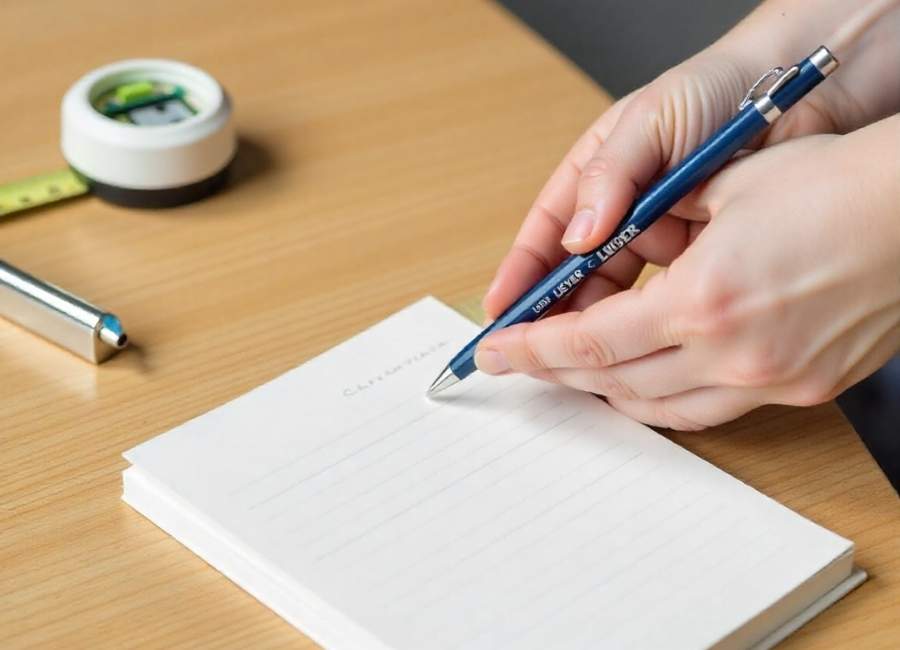
Before diving into specific measurement techniques, gather the right tools to ensure accuracy and efficiency.
Must-Have Measuring Tools:
- Tape measure (25-foot minimum): Choose a sturdy tape measure with clear markings. Longer tapes help when measuring large pieces or rooms without requiring assistance.
- Level: Ensures your measurements account for uneven floors or surfaces that might affect furniture placement.
- Use a notepad or smartphone app to record measurements immediately, avoiding confusion later. Many apps allow you to save measurements with photos for easy reference.
- Pencil: Mark measurement points temporarily when working with complex pieces.
Professional Tips for Tool Selection:
Metal tape measures offer greater accuracy than cloth versions, particularly over longer distances. Look for tapes with both imperial and metric measurements if you’re shopping internationally or working with imported furniture.
Consider investing in a laser measuring tool for large rooms or areas that are difficult to access. While not essential, these devices can significantly speed up the process.
Measuring Different Types of Furniture
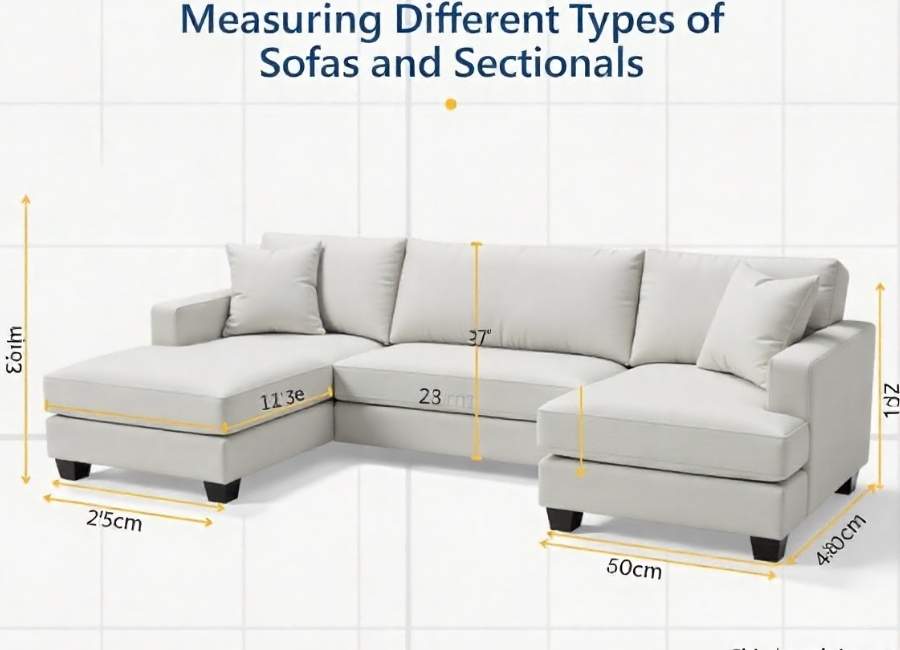
Each furniture category requires specific measurement approaches to capture all necessary dimensions.
Sofas and Sectionals
Sofas present unique challenges due to their size and the multiple spaces they must navigate during delivery.
Key Measurements:
- Overall width: Measure from the widest points, including arms
- Overall depth: From the front edge to the back, including any protruding elements
- Height: From the floor to the highest point, usually the back
- Seat height: From floor to seat surface
- Arm height: Critical for determining comfort and table compatibility
Special Considerations:
Sectional sofas require additional measurements for each component. Measure corner pieces separately, noting their configuration options. Some sectionals can be reconfigured, so document all possible arrangements.
Don’t forget to measure the “delivery path” – doorways, hallways, stairwells, and elevators the sofa must navigate to reach its destination.
Tables (Dining, Coffee, and Side Tables)
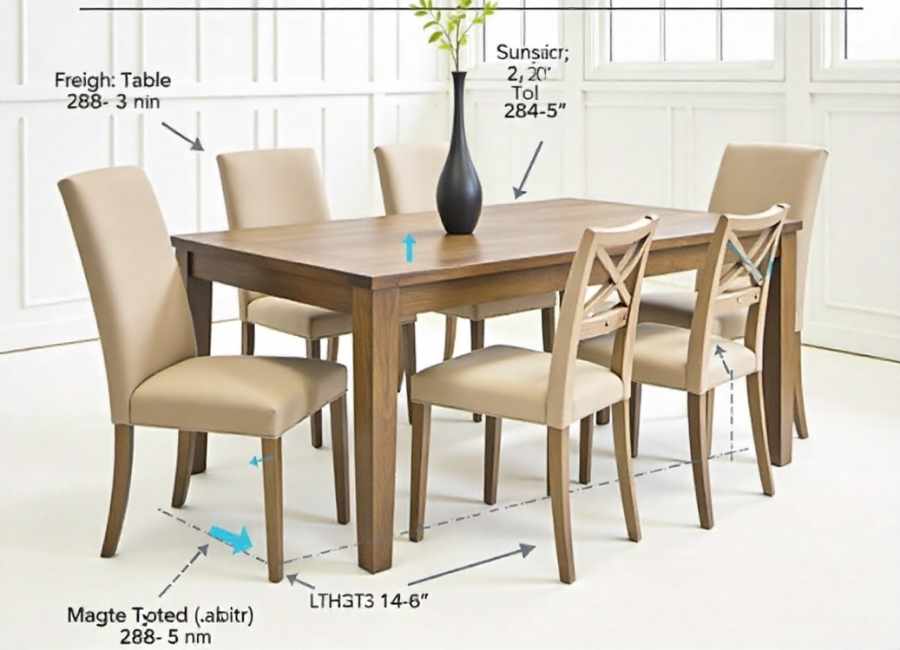
Table measurements directly impact both functionality and flow within your space.
Essential Dimensions:
- Length and width: Measure the tabletop surface
- Height: Standard dining tables measure 28-30 inches high (Dining table – Wikipedia, n.d.)
- Clearance space: Allow a minimum of 36 inches around dining tables for comfortable seating (Dining Room | Space Planning Guide, n.d.).
- Leg placement: Note the position of table legs to ensure adequate legroom
Dining Table Sizing:
Calculate seating capacity by allowing 24 inches of table length per person. (Calculate | Living Designs Furniture & Interior Decor, n.d.) Round tables require diameter measurements, plus the space needed for chairs when pulled out (typically 32 inches from the table edge to the wall). (How Much Space around Dining Table, n.d.)
Beds and Bedroom Furniture
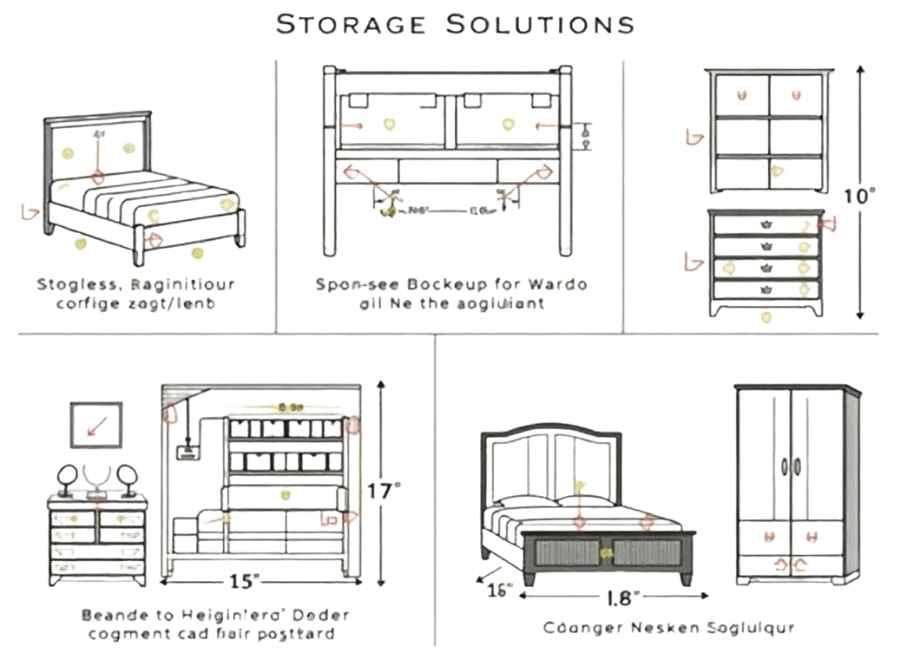
When measuring bedroom furniture, consider both the pieces themselves and the space required for daily use.
Bed Frame Measurements:
- Mattress size compatibility: Confirm the frame fits standard mattress dimensions
- Overall dimensions: Include headboard and footboard in length calculations
- Height clearance: Measure from floor to top of headboard
- Under-bed clearance: Important for storage solutions
Dresser and Wardrobe Considerations:
Measure drawer extensions fully opened to ensure adequate room for use. Wardrobe doors require swing space – typically 24 inches minimum from the door front when fully opened.
Storage Solutions
Accurate measurements for storage furniture ensure maximum functionality and proper fit.
Bookcases and Shelving:
- Internal dimensions: Measure shelf depth, height between shelves, and width
- Weight capacity: While not a measurement, note the weight limits for proper use
- Adjustability: Document shelf adjustment increments if applicable
Cabinet Measurements:
Interior cabinet dimensions often differ significantly from exterior measurements due to wall thickness and hardware. Always measure internal space when storage capacity is your primary concern.
Room Measurement Fundamentals
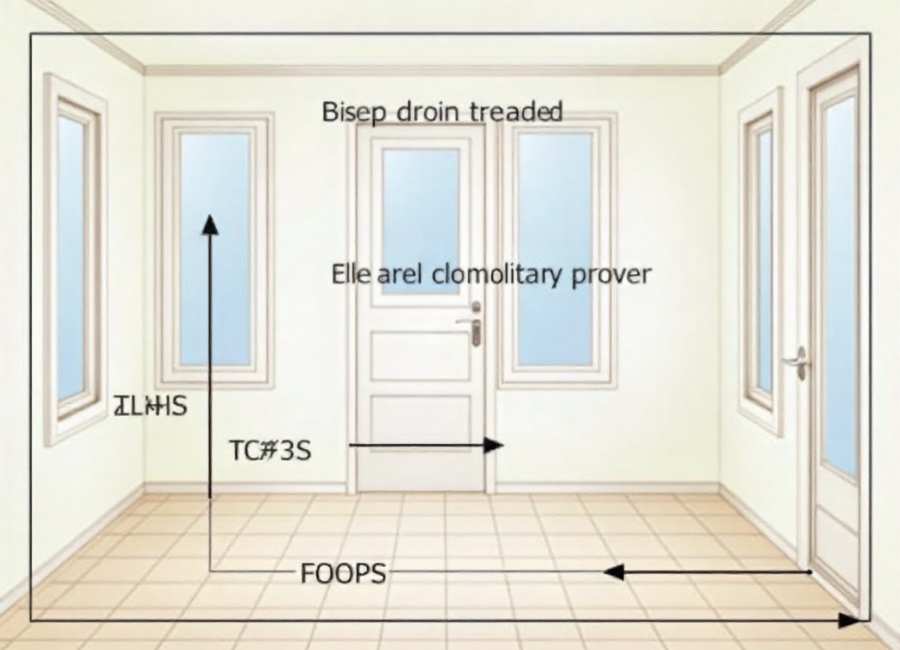
Understanding your space is equally important as measuring the furniture itself.
Creating Accurate Room Maps
Start by measuring room dimensions at floor level, as walls may not be perfectly straight or perpendicular.
Room Mapping Steps:
- Measure length and width at multiple points
- Note any architectural features (columns, built-ins, alcoves)
- Measure ceiling height, especially in older homes with varying heights. (How to Measure a Room for Furniture, n.d.)
- Document window and door locations with their dimensions
- Mark electrical outlets, switches, and cable connections
Traffic Flow Considerations
Plan pathways through furniture arrangements by measuring traffic zones.
Standard Clearances:
- Walkways: 36 inches minimum for main paths, 18 inches for secondary routes (Hoffman & Rachel, 2025)
- Seating areas: 14-18 inches between coffee table and sofa (How to Find the Right Coffee Table Size, n.d.)
- Dining areas: 32 inches minimum from table edge to wall when chairs are in use (How to Measure Dining Table 2025: A Comprehensive Guide, n.d.)
Doorways, Stairs, and Delivery Paths
Many furniture pieces that fit perfectly in a room cannot actually reach that room due to delivery constraints.
Critical Path Measurements:
- Door width and height: Include door frame thickness
- Hallway width: Measure the narrowest point
- Stair width: Measure between railings, not wall to wall
- Landing spaces: Ensure adequate room for maneuvering large pieces
- Elevator dimensions: Height, width, depth, and door opening size
Professional Moving Tips:
Measure diagonal dimensions for large pieces. Sometimes a sofa that won’t fit through a door horizontally can navigate the space when tilted diagonally.
Consider removable legs, cushions, or other components that might ease delivery. Many furniture pieces can be partially disassembled for transport.
Digital Tools and Apps for Furniture Measurement
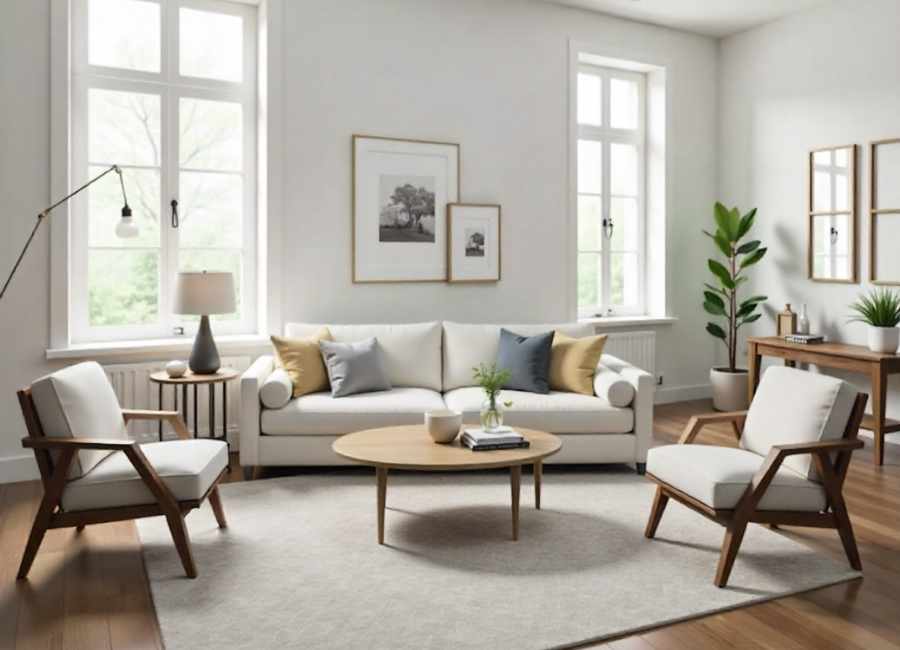
Technology can streamline the measurement process and reduce errors.
Smartphone Apps
Several apps transform your phone into a measuring tool:
- AR-based measuring apps: Use your camera to measure objects and spaces
- Room planning apps: Create scaled floor plans with furniture placement
- Photo annotation tools: Add measurements directly to photos for easy reference
Online Furniture Calculators
Many retailers offer online tools that help determine appropriate furniture sizes for your space. These calculators take into account room dimensions and recommend suitable furniture proportions.
3D Room Planners
Advanced planning tools enable you to create virtual rooms and test furniture arrangements before making a purchase. These tools often include extensive furniture libraries with accurate dimensions.
Common Measurement Mistakes to Avoid
Even experienced decorators make measurement errors that lead to costly mistakes.
Frequent Errors:
- Forgetting delivery path: Measuring the furniture and room, but overlooking hallways and doors.
- Ignoring swing space: Not accounting for door, drawer, or recliner operation clearance.
- Assuming standard sizes: Believing all “queen” beds or “dining” tables are identical
- Measuring only floor space: Forgetting to check the ceiling height for tall pieces
- Rounding measurements: Small rounding errors compound into significant problems
Professional Prevention Strategies:
Always add a 2-3 inch buffer to tight spaces. This margin accommodates measurement variations and provides easier installation.
Double-check critical measurements, especially for expensive or custom pieces. Measure twice, buy once is a strong principle to apply to furniture shopping.
Take photos while measuring to provide context for your notes. Images help recall specific challenges or features when shopping weeks later.
Transform Your Space with Confidence
Accurate furniture measurement removes the guesswork from decorating and ensures every piece enhances your space perfectly. By following these comprehensive guidelines and avoiding common pitfalls, you’ll make informed decisions that create beautiful, functional rooms.
Remember that measuring is an investment in your satisfaction with any furniture purchase. The extra time spent measuring carefully pays dividends in comfort, aesthetics, and a sense of peace of mind.
Start your next furniture shopping adventure with proper measurements in hand. Your future self will thank you when that perfect piece fits flawlessly into your thoughtfully planned space. to choose sustainable, high-quality coffee.







